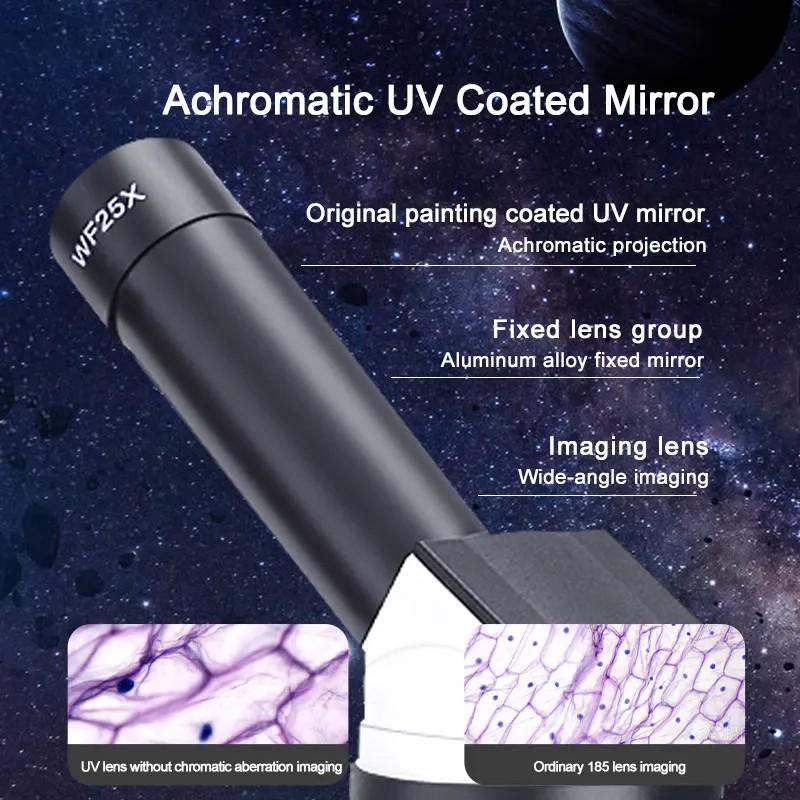Bacteria Can Be Seen Without A Microscope ?
Bacteria cannot be seen without a microscope.
1、 Macroscopic bacteria visible to the naked eye
Bacteria cannot be seen without a microscope. They are microscopic organisms that are too small to be visible to the naked eye. Bacteria typically range in size from 0.2 to 10 micrometers, making them much smaller than the smallest visible objects.
Microscopes, specifically light microscopes or electron microscopes, are necessary to observe bacteria. These instruments use lenses and illumination techniques to magnify and enhance the visibility of bacteria. Light microscopes can magnify bacteria up to 1000 times, while electron microscopes can achieve even higher magnifications.
However, it is important to note that there have been some recent developments in the field of microbiology that challenge the traditional notion that bacteria can only be seen under a microscope. Scientists have discovered a few exceptional cases where bacteria form macroscopic colonies that are visible to the naked eye.
For example, in 2017, researchers discovered a type of bacteria called Thiomargarita namibiensis that forms long chains of cells, creating visible white mats in the ocean. These mats can be several centimeters long and are visible without the aid of a microscope. Similarly, some bacteria can form macroscopic colonies in laboratory settings under specific conditions.
While these macroscopic bacteria are fascinating exceptions, they are not representative of the vast majority of bacteria. In general, bacteria are microscopic and require the use of microscopes to be observed and studied.

2、 Bacterial colonies and biofilms
Bacteria can be seen without a microscope, particularly when they form bacterial colonies and biofilms. Bacterial colonies are visible to the naked eye and can be observed as small, visible clusters or patches on surfaces such as agar plates or in liquid cultures. These colonies are formed when individual bacteria replicate and grow in close proximity to each other, forming a visible mass.
Biofilms, on the other hand, are complex communities of bacteria that adhere to surfaces and are encased in a self-produced matrix of extracellular polymeric substances (EPS). Biofilms can be seen without a microscope as slimy or sticky layers on various surfaces, such as rocks, pipes, or medical devices. They are commonly found in natural environments, as well as in medical and industrial settings.
It is important to note that while bacterial colonies and biofilms can be seen without a microscope, the individual bacteria within them are still microscopic. The naked eye can only observe the collective mass or structure formed by these bacteria.
In recent years, there has been a growing interest in studying biofilms due to their relevance in various fields, including medicine, industry, and environmental science. Researchers have discovered that biofilms play a significant role in chronic infections, such as those associated with medical implants or cystic fibrosis. Understanding the formation and behavior of biofilms has become crucial in developing effective strategies to prevent and treat these infections.
In conclusion, while individual bacteria are microscopic and require a microscope to be seen, bacterial colonies and biofilms can be observed without magnification. The study of these visible structures has provided valuable insights into the behavior and impact of bacteria in various contexts.

3、 Bacteria in environmental samples
Bacteria can be seen without a microscope in certain circumstances, particularly in environmental samples. Environmental samples refer to various substances or materials collected from the environment, such as soil, water, or air. These samples can contain a high concentration of bacteria, making them visible to the naked eye.
For example, in a contaminated water source, bacteria can multiply and form visible colonies, giving the water a cloudy or murky appearance. Similarly, in soil samples, bacterial growth can result in the formation of visible biofilms or slimy layers on the surface. These biofilms can sometimes be observed without the need for magnification.
However, it is important to note that the vast majority of bacteria are microscopic and cannot be seen without the aid of a microscope. Bacteria are typically between 0.2 to 2 micrometers in size, making them too small to be visible to the naked eye. Microscopes allow scientists to observe and study bacteria in detail, enabling a better understanding of their structure, behavior, and interactions.
Moreover, recent advancements in microscopy techniques, such as confocal microscopy and super-resolution microscopy, have further enhanced our ability to visualize bacteria at a higher resolution. These techniques have provided valuable insights into the complex and diverse world of bacteria, revealing intricate details that were previously unseen.
In conclusion, while bacteria can be seen without a microscope in certain environmental samples, the majority of bacteria are still too small to be observed without magnification. Microscopy remains an essential tool for studying bacteria and uncovering their hidden world.

4、 Bacteria in food and water sources
Bacteria can be seen without a microscope, but only under certain conditions. In general, bacteria are microscopic organisms that are too small to be seen with the naked eye. However, under certain circumstances, colonies of bacteria can become visible to the human eye.
One example of this is when bacteria grow in large numbers and form colonies on surfaces. These colonies can sometimes be seen as a slimy film or discoloration on objects such as food or bathroom fixtures. For instance, if you leave a piece of bread out for too long, you may notice mold growing on it. This mold is actually a colony of bacteria that has become visible to the naked eye.
Another example is when bacteria grow in liquid environments, such as water sources. In some cases, bacterial growth can cause the water to become cloudy or discolored, making the presence of bacteria visible. This is often the case in contaminated water sources, where high levels of bacteria can be seen as a result of pollution or poor sanitation.
It is important to note that while the presence of visible bacteria can indicate contamination, not all bacteria are harmful. In fact, many bacteria are beneficial and play important roles in various ecosystems. However, certain types of bacteria can cause illness and disease, so it is crucial to maintain proper hygiene and sanitation practices to prevent the spread of harmful bacteria.
In conclusion, while bacteria are generally too small to be seen without a microscope, under certain conditions, colonies of bacteria can become visible to the naked eye. This can occur when bacteria grow in large numbers and form colonies on surfaces or when bacterial growth causes water to become cloudy or discolored. However, it is important to remember that not all bacteria are harmful, and proper hygiene and sanitation practices are essential to prevent the spread of harmful bacteria.








































There are no comments for this blog.